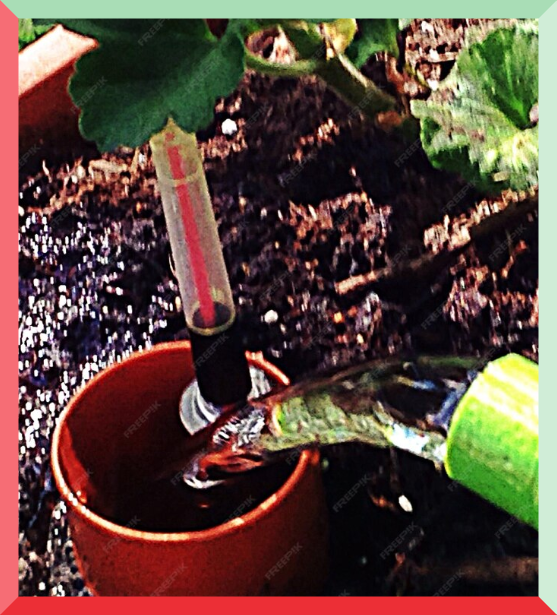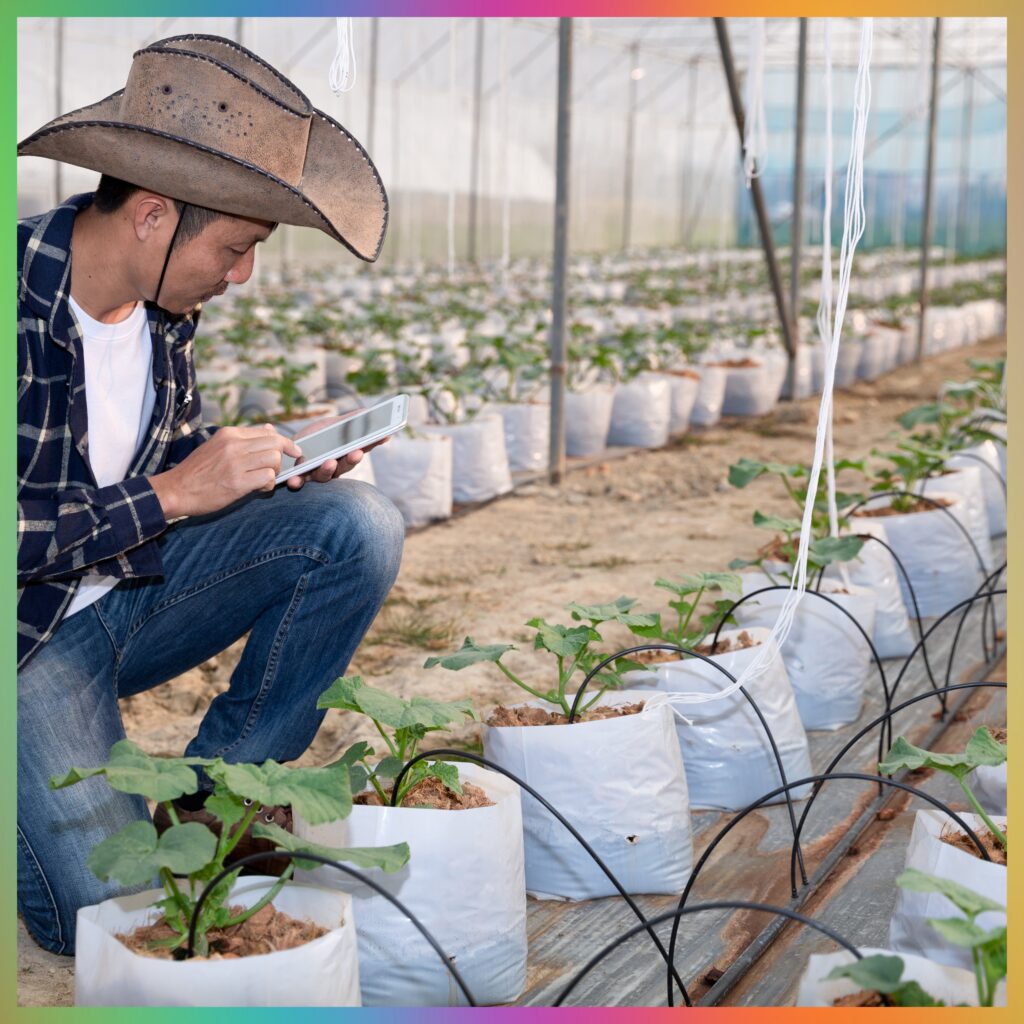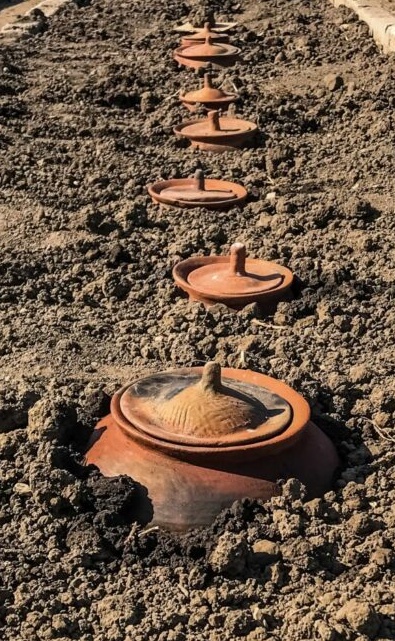
Potted plants significantly enhance both indoor and outdoor spaces, adding aesthetic appeal and freshness to your environment.
However, maintaining lush greenery in potted plants can be challenging. While manual watering is effective, it can be inconvenient due to busy schedules and travel commitments.
Fortunately, several irrigation systems are specifically designed for potted plants, making watering more efficient and hassle-free.
Self-Watering Containers
Self-watering containers, also known as Sub-Irrigated Planters, are the best choice for you if you are new to container gardening or super busy.
These containers work simply by holding the water in the bottom meaning it has a built-in reservoir in the bottom giving a consistent water supply to the plant through capillary action.
Pros
- Reduces watering frequency
- Prevents overwatering
- Great for when you’re on vacation
Cons
- Can be more expensive than traditional pots
- Limited styles and sizes available
- Not suitable for all plant types (especially those prone to root rot)
Drip Irrigation

Drip irrigation is the efficient method that delivers the water right to the plant’s roots.
To set it up based on your pot arrangement, you’ll need drip pipes, connectors, T’s, a timer, and a flow controller.
The best part? You can customize it by installing emitters that suit your plants and controlling the water flow rate.
Pros
- Can be automated with a timer
- Highly water-efficient
- Customizable for different plant needs
Cons
- Initial setup can be complex
- May not be aesthetically pleasing in some settings
- Requires regular maintenance to prevent clogging
Capillary Mat System
The Capillary Mat System is the best irrigation technique for indoor potted plants.
A special porous fabric mat about the size of 3/16 to ½ inch (5 to 13 mm) thick is placed beneath the plots.
The mat was kept moist, and plants drew water up through drainage holes as needed.
Pros
- Ideal for the indoor and multiple small pots
- Reduce the water waste
- Keeps soil moisture consistent
Cons
- Best suited for indoor use
- May promote algae growth if not managed properly
- Not suitable for large, heavy containers
Wick System
If you’re on a tight budget or want an eco-friendly irrigation method, the Wick System is a good choice.
The irrigation work is simple, a wick made of cotton, nylon, or felt, extends from the bottom of the pots or container filled with the growing medium such as perlite, coconut coir, or vermiculite, and the wick draws the water using capillary action from the reservoir.
To work this perfectly, the wick is placed partially in the water source and partially in the soil.
Pros
- Inexpensive
- Very low-tech and easy to setup
- Works well for small to medium-sized pots
Cons
- Not ideal for large containers or thirsty plants
- Wicks may need periodic replacement
- Can be less precise than other methods
Mini Sprinkler
A sprinkler system is used for ground gardens, but there is a small size sprinkler that is suitable for container plants.
They spray water on your plants at set times and can be customized with different nozzles for various spray patterns.
Pros
- Can cover a large area efficiently
- Easily automated
- Simulates natural rainfall
Cons
- Less water-efficient than targeted systems
- May lead to wet foliage, increasing disease risk
- Not ideal for indoor use
Plastic Bottle Drip System
This is a very easy method for pot plant irrigation, and you can make it in a minute.
All you need is a plastic bottle. Punch small holes in the cap, bury the bottleneck in the soil near the plant, and fill the bottle with water. It will slowly drip into the soil.
Pros
- Easy to make
- Easy to use
Cons
- If bottle damaged can cause overflow
- Can Not sustainable for giving the water for long period
Ollas

Ollas are an efficient irrigation system even than drip irrigation.
Ollas are unglazed clay pots buried with their openings above soil level. Fill the pots with water, which slowly seeps through the clay into the surrounding soil.
Pros
- Efficient and effective system.
- Easy to setup and to use.
Cons
- Best suitable for the open garden and drought regions.
- It’s not been automated.
Ok, these are all the irrigation systems available for the potted plants, but before picking one, consider these factors:
- Plant types and water requirements
- Number and size of containers
- Climate and weather conditions
- Available time for maintenance
- Budget constraints
- Indoor vs. outdoor placement
Last Word…
Potted plants have unique watering needs compared to those grown in the ground. Limited soil volume makes them prone to drying out quickly, while inconsistent watering can lead to root rot and other issues.
Choosing the right irrigation system can significantly impact plant health and simplify your gardening experience. Whether you opt for a high-tech automated system, a simple wick method, or something in between, the key is to provide consistent and appropriate moisture.
Remember, the best irrigation system is one that aligns with your lifestyle, budget, and plant needs.

Leave a Reply